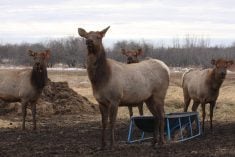A wind of change blowing in markets and society presents new opportunities for farmers willing to set their sails and steer into new waters.
Bioproducts, functional foods and new dining and leisure trends present business options to break from traditional commodity production and to increase revenue on the farm without expanding the amount of land cultivated.
But to fully capitalize on them, producers must apply good business management concepts and work with like minded producers and others in the food chain, say business management authorities.
Read Also

Saskatchewan throne speech promises strong economy
Saskatchewan’s legislative agenda for the coming year will focus on meeting the challenges of new world trading relationships, said the speech from the throne.
“Get a product people value so you can capture more of that value,” said David Sparling, executive director of the Institute of Agri-Food Policy and Innovation in Guelph, Ont.
Sparling said there are markets that will pay for products with certain features. It’s the job of producers and their network to figure out what consumers need and how they as producers can deliver what customers want.
Fast changing societal trends offer more opportunities than ever.
Immigration is expanding the range of foods Canadians eat, creating an opening to service these multicultural markets.
Worries about diet, trans fats and obesity are opportunities for those growing low linolenic canola and other foods that offer healthy attributes.
Natural foods are also gaining in popularity, with fruits and vegetables incorporated into many everyday products.
Organics is big business and smaller producers are in a good position to control their goods and attend to the particular needs of that market.
Increasing affluence and a growing desire for new leisure experiences are opportunities that agritourism can provide. The same societal trends cast a favourable spotlight on regional cuisine, opening the door to brand products like Alberta beef or prairie fruits.
“We can produce crops unique to (the Prairies) to distinguish us from other crops around the world to capture a higher price,” Sparling said.
That can be accomplished through on-farm innovation and off the farm through networks. She stressed the need to get close to clients to discover what they want, either at farmer’s markets or through grower and business associations.
Producers need to work together, branding products and improving genetics while retaining the intellectual property from research in developing new products and processes.
Sparling said grower associations can help link farmers and buyers and support such research and development.
Wanda Wolf, who grows herbs at Phippen, Sask., said many small farmers can benefit from these connections and the expertise of others.
“There’s a lot of people with entrepreneurial spirit who have not moved ahead with their ideas,” said Wolf, who grows St. John’s wort, milk thistle and other medicinal plants.
They may be ready for export markets but are afraid to jump forward due to the many uncertainties.
As co-chair of the small business and entrepreneurship committee of Saskatchewan’s Action Committee on the Rural Economy, Wolf helps identify gaps in programs and policies to enhance business development, cultivate more First Nation involvement in the labour force and help rural businesses move forward.
Wolf said growing specialty crops for niche markets requires a different mindset and business plan, where returns are recorded by the pound instead of the acre.
There are substantial returns for those who think about their operations from weeding to harvest to marketing.
“It’s not something you just jump into,” she said, advising producers to start small with garden plots first to test the waters.
Gather information, connect with related organizations, plan carefully and adapt existing equipment to keep costs down.
“The only limitations are in your mind,” she said.














